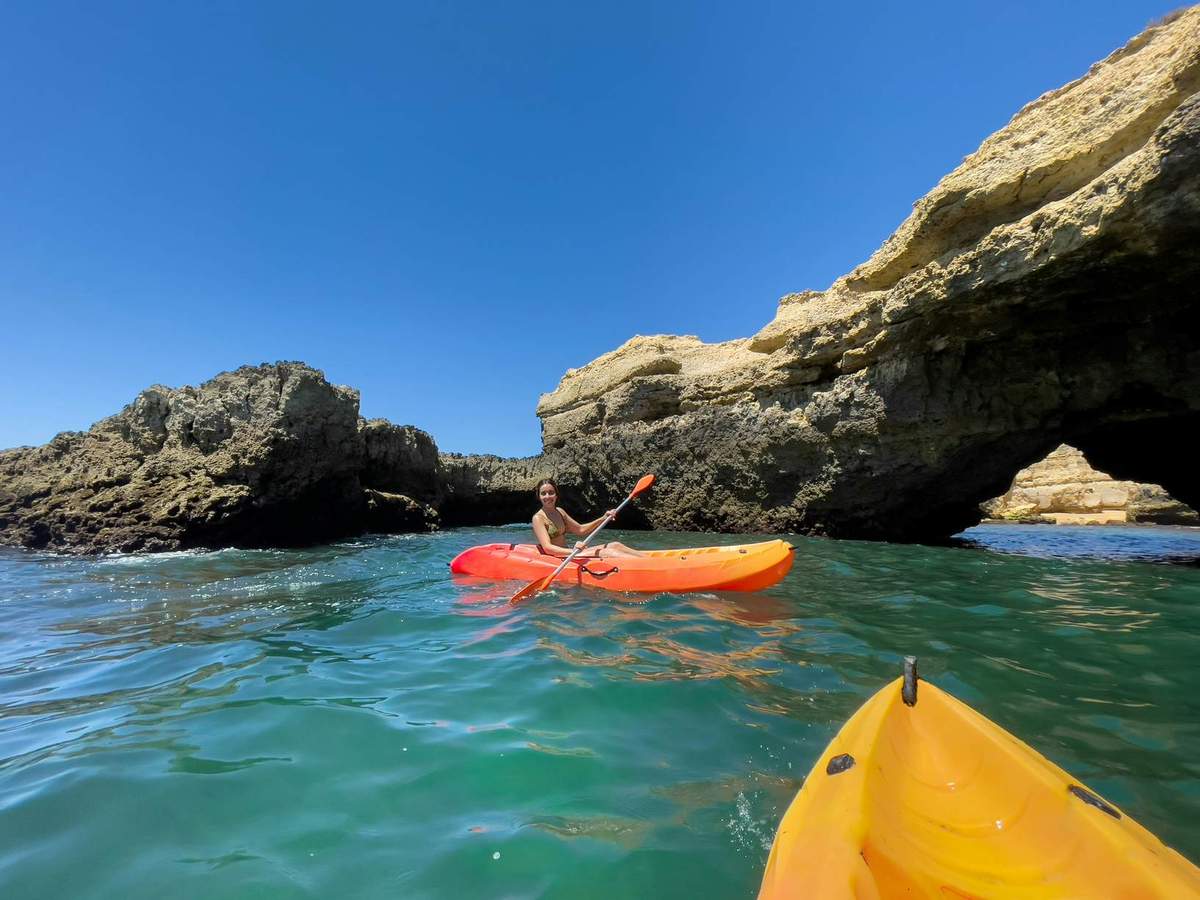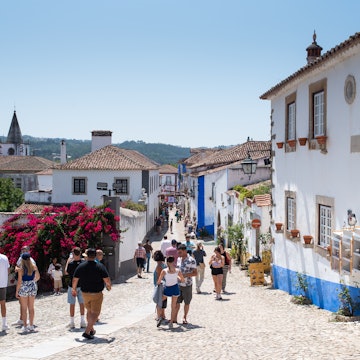
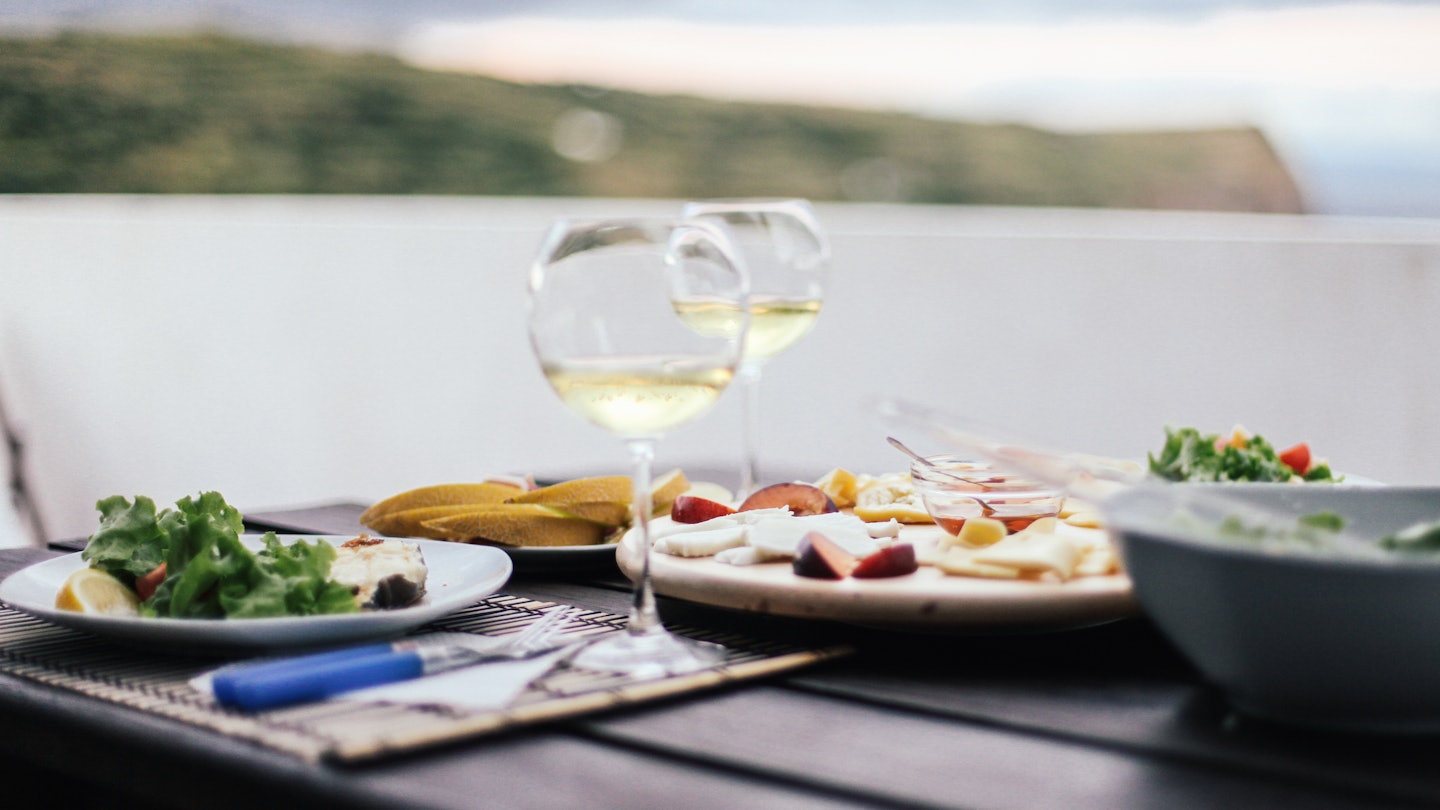
Taste the best flavors of the Azores with this guide to what to eat and drink on the islands. Dabyki Nadya/Shutterstock
Sandra is an Azorean native who has researched and written the first Lonely Planet guide to the Azores.
Azorean cuisine is a mix of the first settlers’ influences from mainland Portugal — the Algarve and Alentejo, in the south, and northeastern Trás-os-Montes — and the make-do resourcefulness brought by the need to include whatever the islands gave them: seaweeds, taro, sweet potatoes. The base ingredients might differ slightly, but the Azoreans continued to use herbs and spices to enhance the new recipes’ flavors. Seafood, pork and beef are at the base of most traditional staple dishes, preferably paired with local wines from a revived and thriving winemaking industry.
Taste the flavors of the Azores with this guide to local dishes and drinks, and the best places to try them.
Join a communal feast of Sopas do Espírito Santo
Faith in a higher power is strong in the Azores, caused by centuries of enduring storms and earthquakes in almost complete isolation. The origins and the peculiarities of the annual festivities in honor of Espírito Santo (Holy Ghost) are complex to explain, but the cult brings out the sense of community holding the Azoreans together since the first settlers. Whoever is around is invited to sit and eat, and everyone is served while the food lasts. Each island will have its version of this free-for-all meal, and it sometimes varies within the same island, but the soup is common to all: broth with bread, seasoned with herbs and spices.
Where to try it: These communal feasts usually happen on Sundays after Mass on any island between April and June. Ask around to find out which town is hosting one.
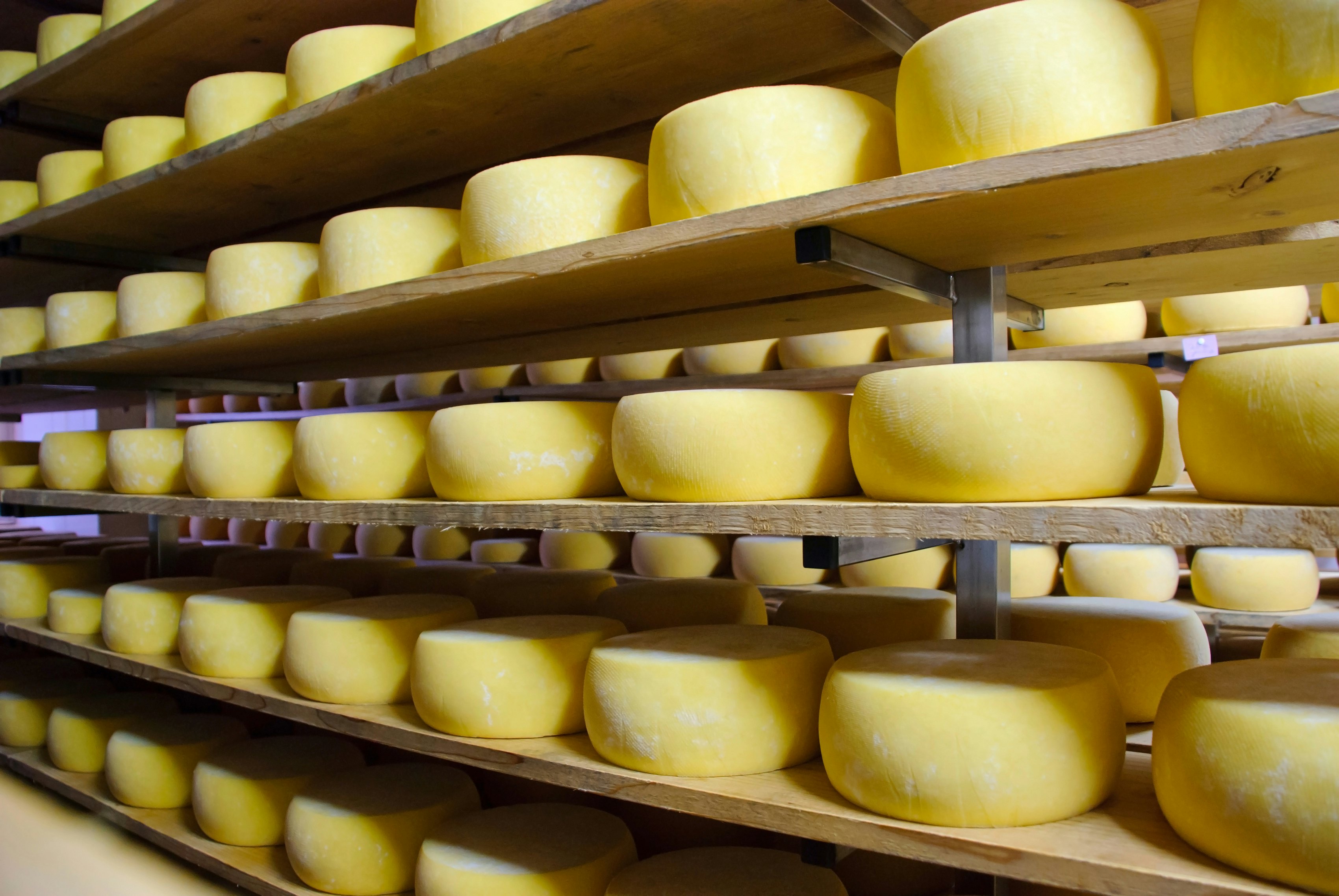
Taste the rich and spicy cheese of São Jorge
On São Jorge Island, most of the milk produced on local farms is entirely used in making the island’s certified cheese — the quality of which is verified by a select group of official tasters. The cheesemaking process is industrialized to a minimum. Although it’s not a small-scale production, a lot of time, care, and patience goes into each cheese. With a spicy taste and a rich texture, the older the cheese, the tangier it gets, so aim for the 3-month-old ones if you prefer something milder.
Where to try it: Uniqueijo, Finisterra (Topo), Lourais.
Try the erva patinha (Atlantic nori) fried patties
Tortas de erva patinha (egg and Atlantic nori fried patties) perfectly symbolizes how the Azoreans learned to cook with what they had. Made with Atlantic nori algae, eggs, flour, herbs and spices, you can eat them as a petisco (food to share) or a meal. They’re a little salty and not the most attractive dish (I only grew to like them much later as an adult), so it won’t appeal to all palates.
Where to try it: Restaurante Pôr-do-Sol (Flores Island).
Discover the mineral whites and fruity reds of the Azores Wine Region
Pico Island's vineyards became a UNESCO World Heritage Site in 2004, and the Azores Wine Region witnessed a renaissance, reviving the archipelago's small-scale winemaking industry that mainly uses indigenous grapes. The volcanic soils make white wines mineral and acidic, while the less common reds are full-bodied and fruity.
Where to try it: Azores Wine Company (Pico), Museu do Vinho (Terceira), Adega Cooperativa (Graciosa).
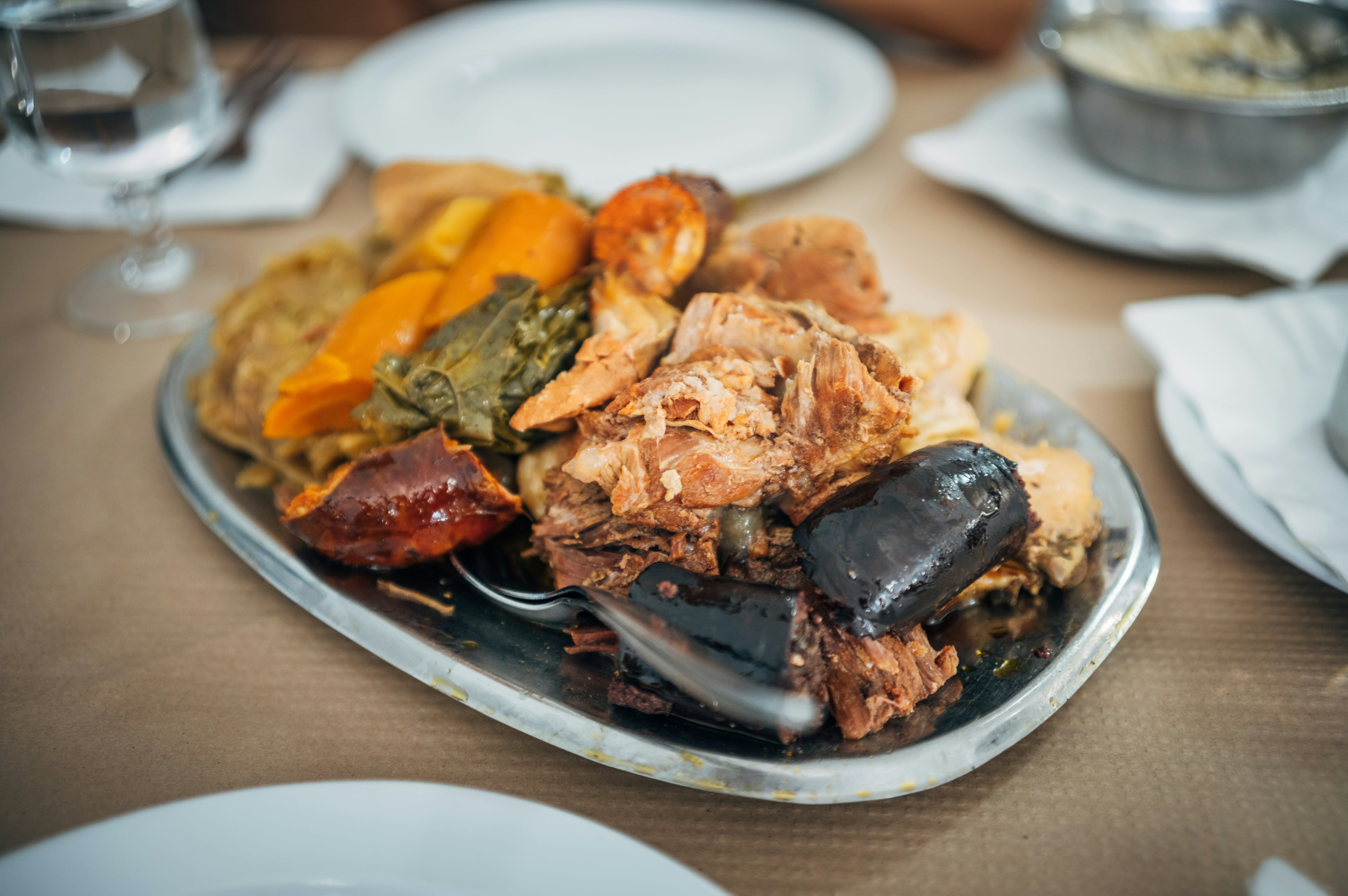
Eat a meat-and-potato stew cooked underground in Furnas
Known as the Azores' most famous dish, you can only find cozido das Furnas (stew) on São Miguel Island. A large pot with layers of beef, pork, poultry, sweet and white potatoes, taro, vegetables, and sausages is tightly closed and lowered inside a designated hole in the village of Furnas — the volcanic steam will slow cook the stew for about 7 hours.
Where to try it: Restaurante Tony’s, Restaurante Terra Nostra.
Indulge in traditional pastries
Sugar, eggs, and milk are the base ingredients of the Azores' three most famous traditional queijadas (pastries). Flavored with spices like cinnamon and nutmeg, Terceira’s Dona Amélia is a nod to the island’s past connection to the spice trade. Queijada da Graciosa is a star-shaped, crisp, thin shell filled with a cinnamon-flavored, sugary, milk and eggs thick paste. And when in São Miguel, experience the Queijadas da Vila full sensory experience from the moment you unwrap it to reveal the thick layer of powdered sugar on a compact caramel-colored cake.
Where to try it: O Forno, Queijadas da Vila, Queijadas da Graciosa.
Experience the fragrant, slow-cooked pot roast alcatra
From a household meal prepared on special occasions, alcatra (rump) would become Terceira Island’s signature traditional dish. And although the name stands for a cut of meat, it’s now applied to the beef or fish stew, seasoned with spices and wine, slow-cooked inside a clay pot. Skip the side dishes because the best way to savor alcatra is with pieces of massa sovada (sweet bread) soaked in the roast’s sauce.
Where to try it: Ti Choa, Boca Negra.
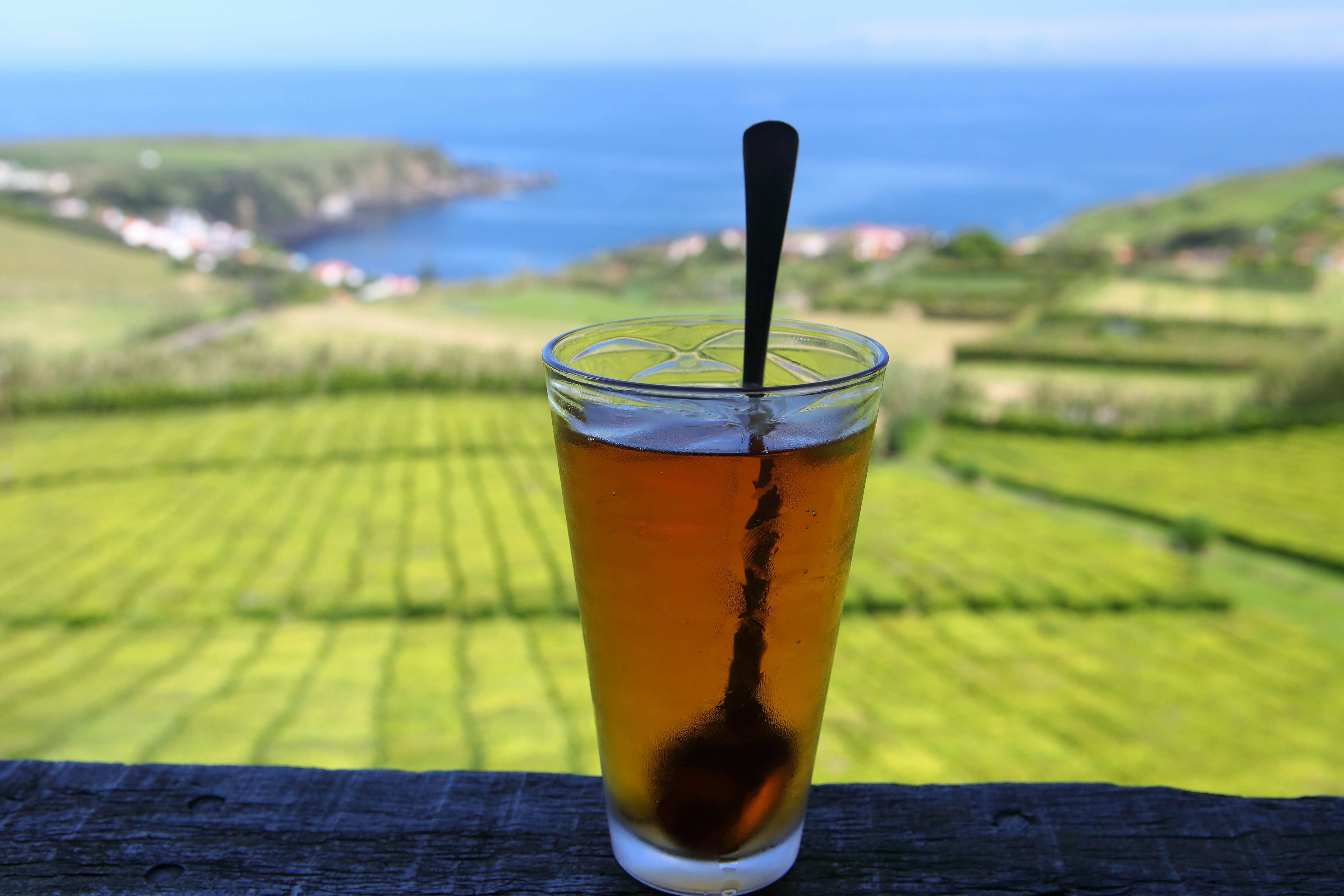
Drink a freshly brewed cup in Europe’s oldest tea plantation
Tea isn't usually the first thing that pops into travelers’ minds when mentioning the Azores, but the fame of Europe’s oldest tea plantation, Gorreana, has long transcended São Miguel’s borders. The family-owned company established in the 19th century is the best-known brand, but not the only one. Newer Chá Porto Formoso specializes in organic tea with its signature Azores Home Blend.
Where to try it: Fábrica de Chá Gorreana, Chá Porto Formoso.
Other foods and drinks worth trying
Kima Maracujá: Sweet, fruity, carbonated drink made with passionfruit. It’s fairly easy to find in supermarkets, most cafes, and some restaurants.
Inhame (taro): This brown root with a potato-like consistency grows well on the islands, and it’s a popular side dish in the local diet, served boiled or fried.
Lapas (limpets): A summer delicacy, this mollusk can only be caught between June and September. Best served grilled with a splash of lemon juice.
Bolo lêvedo: These slightly sweet, fluffy buns originally from Furnas (São Miguel) are great for toasts, sandwiches, and hamburgers.
Vegetarians and vegans
Milk, beef and pork are at the base of most local dishes. Outside of São Miguel and Terceira, the larger islands, finding restaurants catering to vegetarians is challenging and more complicated for vegans. However, most places will try to accommodate dietary restrictions, and menus including plant-based alternatives, are becoming more common.

A year in food
Spring (March to May)
Easter and Espírito Santo (Holy Ghost) mark the calendar of religious celebrations, and the best time of year to enjoy filling meals like alcatra (pot roast) or sopas do Espírito Santo (broth with bread, herbs and spices).
Summer (June to August)
Feast on various seafood and shellfish, including tuna, parrotfish, grouper, limpets and conger.
Autumn (September to November)
It’s wild blackberry and araçá (strawberry guava) season. These versatile fruits are often transformed into jams or homemade aguardente (liquor).
Winter (December to February)
It’s Christmas season, followed by four weeks of pre-Carnaval (Mardi Gras) celebrations. To prepare for Lent’s fasting, it was a Catholic tradition to use up all the sugar, fat and flour before Easter, and seasonal sweet malassadas (deep-fried dough sprinkled with sugar and cinnamon) were born.






